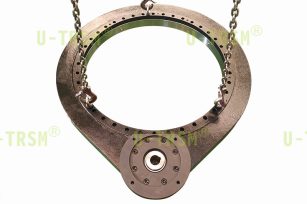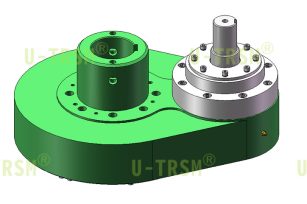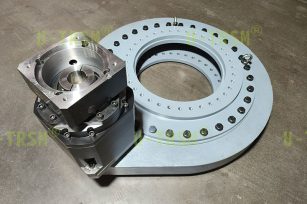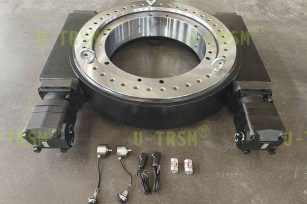Latest Products
We keep on updating and iterating our products, optimizing the structural design and creating a more scientific and reliable slewing drive device.
-
 Selection and characteristics of slewing d...
Selection and characteristics of slewing d...This slewing drive is used in automated mixing equipment. The customer requires that it rotate in the same direction ...
Detailed instructions Send mail -
 Analysis of the high speed rotating double...
Analysis of the high speed rotating double...This double row ball gear type slew drive is used in automation equipment. The customer requires ultra-high speed ope...
Detailed instructions Send mail -
 30855 slew drive assembly: precise protect...
30855 slew drive assembly: precise protect...Introduction In the field of industrial transmission, U-TRSM has always been a leader in innovation, committed...
Detailed instructions Send mail -
 High load slewing drive solution for deep ...
High load slewing drive solution for deep ...This slewing drive is used in marine machinery and equipment, suitable for underwater locations at depths of up to 30...
Detailed instructions Send mail
Why should there be a difference in tooth hardness between large and small gears in a slewing drive?
Publish time:2025/01/04 News Views:188
In the process of designing slewing drives by U-TRSM, there is usually a difference in hardness between large and small gears on the gear transmission system, what is the significance of the existence of this hardness difference in practical applications? Below, the design engineers of U-TRSM will analyse a few points for your reference.
In gear-driven slewing drives, the pinion gear meshes more often than the large gear. Since the pinion gear usually has fewer teeth and each rotation will mesh with multiple teeth of the large gear, the pinion has a higher frequency of contact and wear, and frequent meshing and contact will cause the pinion’s tooth surface to be more prone to wear, and in order to equalise the wear of the tooth surface of the both gears, it is necessary to increase the tooth surface hardness of the pinion.
Slewing drive pinion gear tooth root thickness is usually smaller than the large gear, which means that the pinion gear in the same load, the root part of its teeth is more likely to produce stress concentration and fatigue damage, in order to make the strength of large and small gears close to extend the design service life of gears, usually the tooth hardness of pinion gears is designed to be higher than that of large gears, which can compensate to a certain extent for the lack of strength of pinion gears due to the small thickness of tooth root.
In the process of slewing drive gear transmission, the harder pinion tooth surface can play a cold work hardening effect on the softer large gear tooth surface, this effect can improve the fatigue limit of the large gear tooth surface, so that it is more resistant to fatigue damage, through the cold work hardening effect, the hardness and fatigue resistance of the tooth flanks of the large gears are enhanced, thus contributing to the extension of the service life of the entire gear train.
In the manufacturing process of slewing drive gears, factors such as material selection, heat treatment process, etc., also need to be considered to ensure that the expected hardness difference is achieved.
In summary, the hardness difference between the large and small gears in a slewing drive is mainly to balance the wear of the two gears, to improve the strength proximity and to increase the fatigue limit by using cold hardening to extend the overall service life of the slewing drive.
- What are the effects of gear radial runout...
- How to choose couplings when designing spu...
- Comparison of slewing ring and spur gear s...
- The importance of grease to spur gear slew...
- How to choose a slewing drive with suitabl...
- How should the slewing drive be lubricated...
- Why do slewing bearing gears need to be gr...
- Why use thread fastening glue for spur gea...










